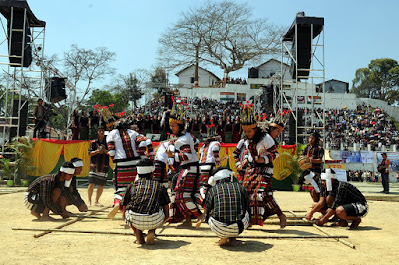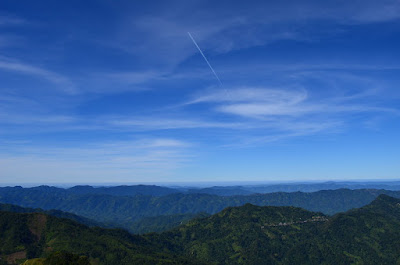Mizoram is located in the
north-east corner of India between 21°56’N - 24°31’N latitudes and 92°16’E -
93°26’E3 longitudes sandwiched between Bangladesh and Myanmar. Its location is
of strategic significance geographically and politically and shares a total
common international boundary of about 585 kilometers with these two countries.
In terms of size, it may not be so significant as its total area
constitutes only 0.64 percent of the total area of India. The tropic of
cancer, i.e., 23°30’N latitude cuts across the region in Aizawl district at the
southern periphery traversing places like Champhai, Chhawrtui, Darlung and
Phuldungsei, etc.
This imaginary line divides the region into two almost equal
parts. Mizoram is bounded on the north by Cachar District of Assam and the
state of Manipur, on the east and south by Chin Hills of Myanmar; on the west
by Chittagong Hill tracts of Bangladesh and the state of Tripura.
History
Many historians believe that the
Mizo is a part of the great wave of the Mongolian race spilling over into the
eastern and southern India centuries ago. There has been no systematic study on
the origin of the Mizo and their coming and occupying the present habitat is
still a mystery. Systematic research has not been made so far.
As per the
tradition, the Mizo ancestors emerged from a cave or rock known as Chhinlung
somewhere in China. They moved through Tibet into the Hukwang valley in Burma
over time, following the Chindwin into the Kubaw valley to enter the Lushai
hills in the 18th century36. It is believed that the Mizo are of Mongoloid
stock and are believed to have immigrated into their present habitat possibly
between 1400 and 1700 or 1800 AD from upper Burma.
However, the Mizo Historians such as K. Zawla
and Rev. Liangkhaia37 have argued that the Mizo were in the Chin Hills in Burma
from 1400 AD to 1700 AD and their gradual movements of migration started
between 100 AD and 1730 or 1740 AD. But in the absence of any written document
or history, more accurate dates about the movement cannot be envisaged.
The
Mizo, however, migrated from Burma for mainly two reasons, the pressure of the Chin
or the stronger clans of Burma and the pressure of overpopulation. Thus the
Mizo is not only concentrated in the present state of Mizoram but also in the
states of Manipur, Cachar district of Assam, Chittagong hill tracts and Chin
Hills of Burma.
Physiography
Mizoram is a mountainous expanse,
which became the 23rd state of the Indian Union on 20th February
1987. It lies in the southernmost corner of northeast India. It is bounded
on the north by the Cachar district of Assam and the state of Manipur, on the
east and south-east by Chin Hills of Myanmar and on the west by the state of
Tripura and Bangladesh.
Being sandwiched between Myanmar and Bangladesh its
location is of strategic significance geographically and politically and shares
a total common international boundary of about 585 kilometers with
these two countries.
Thus about 75 percent of its boundaries are bounded by
foreign countries. Mizoram has a total geographical area of 21,081 square kilometers.
Its maximum dimensions - north to south is 285 kilometers and
east to west is 115
kilometers .
This imaginary line divides the state into two almost equal
parts. The whole area consists of ranges of hills running north to south in parallel
series, separated from one another by narrow valleys with only a very small
portion lying in the plains.
The hills are very steep and precipitous whereas
the eastern sides are somewhat gentler. The territory, in fact, runs
length-wise, the length being twice the breath. The average height of the hills and
ranges are about 900 meters ,
though here and there are peaks over 1829 meters in height
and the Phawngpui (Blue Mountain), the highest peak in Mizoram rises to a
height of 2165 meters .
Forests of trees and bamboos cover most of the hills, but scars left by
constant Jhumming may be seen. Amidst this jungle-covered by hills and narrow
valleys, there are a few small plains in the state, which are believed to have
formed in beds of silted-up lakes. There are many rivers in Mizoram, however,
only a few of them are large.
The rivers at different places created deep gorges and cut across the striking ridges constituting water gaps. The northern parts
of the region are drained by rivers TIawng, Tuirial and the Tuivawl, all of them
flowing northward and eventually enter into Barak river in Cachar district of Assam.
The southern regions are drained by rivers Chhimtuipui (Kolodyne) on the east
with its tributaries Mat, Tuichawng, Tiau; while Khawthlangtuipui (Karnaphuli)
at the mouth of which stands Chittagong with its tributaries Tuichawng,
Kawrpui, Phairuang, Kau and De constituted or formed the western drainage
system. Briefly, the drainage system of Mizoram can be classified as:
Chhimtuipui drainage system, TIawng drainage system, Tiau drainage system,
Khawthlangtuipui drainage system, Tuirial drainage system, and Tuivawl drainage
system. Almost all the rivers in Mizoram are fed by monsoon rain only.
Accordingly, they swell rapidly during the rainy season and recede shortly after the end of
the season. Thus in winter and dry season, the volume of water in the rivers is
very small and many rivers are almost dried up.
Most of the rivers are unnavigable
and greatly hinder communication and transportation of goods and services and
make the construction of roads difficult and costly. Of late, an attempt has
been made to harness these rivers for developing Hydro Electrical projects,
which is urgent, required for domestic lightning and development of large,
medium and small scale and cottage industries as well. There are only a few
lakes in the state.
The three largest lakes are Palak Dil, Tam Dil and Rung Dil. Palak Dil situated in the southern part of Mizoram is the biggest lake in
the state. Generally most of the lakes are situated in high altitudes except
Tam did, which is about 100 kilometres from Aizawl, the capital of the state.
Lakes in the state have not yet been developed for potent and effective
economic purposes.
People
The word Mizo is a generic term,
which literally refers to 'hill-man' or 'highlander". The Mizos are a
myriad and diverse family of tribe intimately bonds together by common
tradition, culture, custom, belief and practices, language and mode of living.
They are a distinct unit culturally, ethnologically and linguistically. They are enthusiastic and committed people inclined on sustaining and safeguarding
their customs, values and identity.
 |
| PC-Public.Resource.Org/CC BY 2.0 |
The Mizo society is composed of various
tribes and further, these are divided into sub-tribes and clans. Following are
the predominant subtribes of the Mizo - Lusei, Lai, Ralte, Hmar, Mara and
Paite. Again, these tribes are subdivided into clans and sub-clans.
The Lusei,
Ralte, Hmar and Paite occupy the northern and the middle parts of the region
constituting the majority of the population, whereas the Lai and Mara inhabit
the southern corner of the territory, and comprise the bulk of the population in
south Mizoram.
Language
Mizo is the official language and popularly used language for verbal interactions. English is important for education, administration, formalities and governance, is also widely used. The Duhlian dialect, also known as the Lusei, is the first language of Mizoram and has come to be known as Mizo Language. The Language is mixed with other dialects like the Hmar, Mara, Lai, Paite, Kuki, Gangte etc.
The Christian
Missionaries developed the Mizo script. Writing in a combination of the Roman
script and Hunterian transliteration 19 methodologies with prominent traces of a phonetics
based spelling system.
There are 25 letters: A, AW, B, CH, D, E, F, G, NG, H,
I, J, K, L, M, N, O, P, R, S, T, T, U, V, Z. Mizo is one of the languages with
official status in India (at the state level). Hindi is a compulsory subject
for all students’ up-to class VIII and has growing usage. Nepali is also spoken
by the Nepali immigrants in the state.
To study more about Mizoram some recommended books given below. These books are also used as references for this article. So, I highly recommend you go through these books. For details click the book title.

